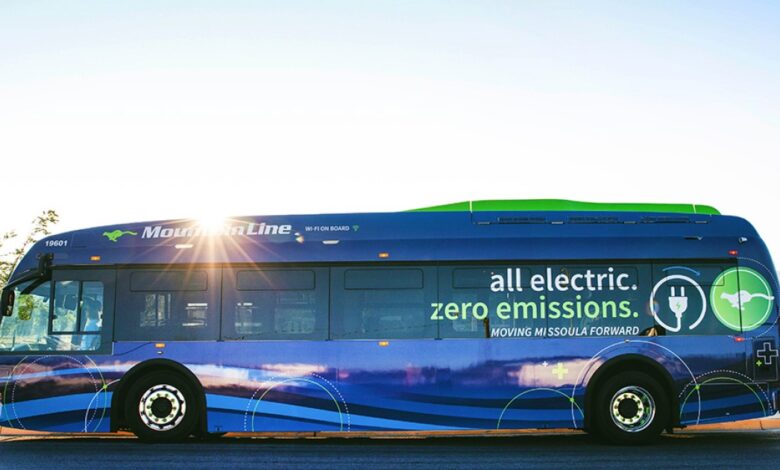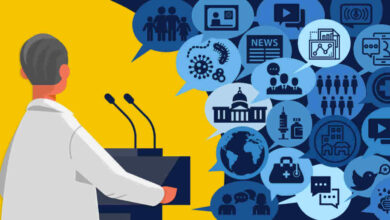Electrified buses clean up urban transportation

When you hear “EV,” you tend to think of a car, but the term is very broad. electric bikes and scooters also fall into this category, as do buses. Public transportation is already a fairly sustainable option. Given the large size of buses’ battery packs and their pre-existing efficiency for mass transportation, does switching buses to electric significantly reduce emissions? Is adding commercial charging infrastructure worth the work and cost?
Our first stop to answer these questions was Joint Energy and Transportation Office. This specialized government group supports the electrification of public transportation by providing resources and technical assistance to local agencies.
We’re told that over the lifetime of a single-battery electric bus, total greenhouse gas emissions are estimated at 1,192 short tons, compared to 2,112 short tons for a diesel equivalent. That’s a difference of more than 40% and a strong argument in favor of electric buses just because of the climate impact.
The Joint Office of Energy and Transportation pointed out to us the AFLEET online toolwhich provides estimates for all types of traffic emissions scenarios. For example, a single all-electric transit bus operating in the District of Columbia has an estimated fuel economy of 11.2 miles per gallon of diesel equivalent (MPDGE), while a diesel transit bus is estimated at 4.4. miles per gallon (MPG). Getting more than double the emissions mileage is pretty good.

Beyond greenhouse gas emissions, there are local emissions. People who use public transportation are exposed to all types of particles. The American Lung Association says we can mitigate pediatric asthma attacks and childhood deaths by reducing exposure to direct transportation emissions. The adoption of zero-emission vehicles could cumulatively equate to $978 billion in public health benefits, 89,300 fewer premature deaths, 2.2 million fewer asthma attacks, and 10.7 million fewer work days lost. These benefits would also be equitable since low-income people are more likely to ride the bus.
As for charging, DC fast chargers can be centralized at bus stations, where they can be well maintained. Electric buses use chargers similar to those in consumer vehicles, minimizing technological hurdles. That said, additional charging stations are required in service areas for buses to maintain consistent uptime, and bus routes should be adjusted accordingly.
However, public transportation is only the first stop for the electrifying buses. School buses transport many more people every day. In the US, more 25 million children ride the bus every day. Establishing schedules with long breaks in between provides predictability for school bus loading and network demand. Bus batteries are so large that their potential contribution of vehicle energy to the grid on this timeline is promising. Through schemes like that provided by Zum in OaklandSchool buses can help provide power to homes during peak evening hours, when the grid is under greatest pressure. These buses can even begin to pay their initial cost through net metering, whereby schools earn credit on their electricity bills by feeding power back into the grid when it is needed most.
When we look for success stories, it’s hard to ignore China.

“ That suggests we could be doing more in this space. “I wouldn’t be surprised if China accounts for 80% of the world’s electric bus fleet.” says Christopher Knittel.
Christopher Knittel is from the MIT Energy and Environmental Policy Research Center. He is an economist who has spent a lot of time analyzing the costs, challenges and opportunities around transportation electrification. Indeed, his vision of China is correct. He last count in 2022 puts the number of China’s purely electric buses at around 455,500, which accounted for 64.8% of the global share at the time. In comparison, the United States had Just over 6,000 battery electric buses in 2023.
Shenzhen is particularly noteworthy Local expertise has equally been applied to electrifying its entire fleet of 16,000 buses, and that was seven years ago. Since then too completely electrified its taxi fleet. This shows that it can be done, but it requires a lot of government support.
bumps on the road

Why haven’t we already flipped the switch and electrified America’s bus fleets?
On the one hand, we have to wait for the gas guzzlers to leave. Municipalities have spent a lot of money on the buses they have and, with tight budgets, it doesn’t make financial sense to retire them while they are still in operation. As of 2021, approximately 22% of the US bus fleet He was eligible for retirement, which isn’t a bad thing to start with.
Even once diesel buses are retired, electric alternatives will still cost more than three times as much as their fossil fuel counterparts. It’s a tough pill to swallow, even with long-term savings in fuel and maintenance costs. It would take $8.5 billion to replace 22% of the bus fleet that was ready to run as of 2021 and another $2.0 to $3.1 billion to replace the three to four thousand buses that will be retired each year until 2035. On the other hand , the Chicago Transit Authority estimates that they would save approximately $25 million in annual costs with a completely converted fleet.
The weather also affects the performance of electric vehicles. Batteries become unstable when exposed to high temperatures, requiring additional energy to be spent on cooling. That extra energy can put a 25% dent in rangedepending on conditions. A launch in Albuquerque was stopped due to buses not work under heatThere were other problems, though, and the city continued to expand its electrified fleet. Meanwhile, Indianapolis needed install additional wireless charging stations to compensate for the lack of autonomy caused by the cold.
What’s the next stop?
When asked how to improve the adoption of electrified fleets in the United States, Knittel’s hopes were in policy changes.
“I would love to see more federal guidance on this. We can leave it in the hands of the municipalities. We can leave it in the hands of the states. We can leave it to the school districts. But there are potentially a lot of economies of scale here. Unless we have market coordination between states and cities, we simply will not have access to the best and cheapest technologies.”
The state of New York already enacted a mandate to switch to electric school busesand California has similar legislation for Public transport will fully transition by 2040. The new tax credits in the Inflation Reduction Act provide some incentives at the federal level for commercial electric vehicles and charging infrastructure, plus about $1.5 billion in direct financing is being provided for electrification.. It will take time to see the impact of this funding. It’s a good start, but there’s still a long way to go.






